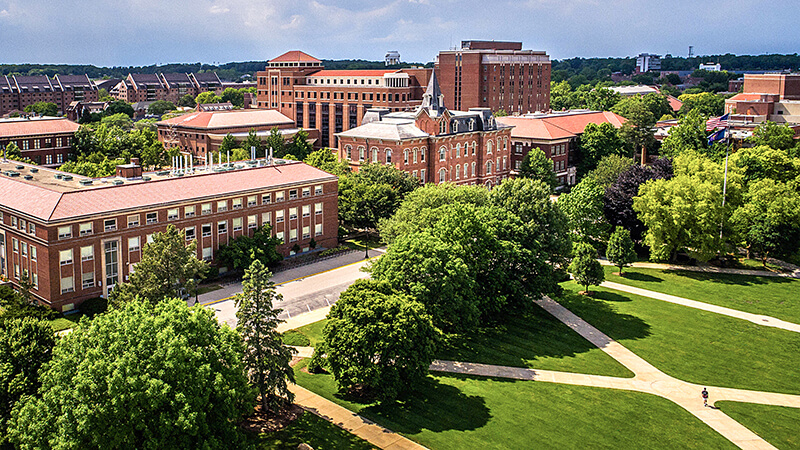November 5, 2020
Purdue short course covers building water system basics, offers guide for bringing idled systems back, operating safely

WEST LAFAYETTE, Ind. — As if COVID-19 weren’t enough, harried public health professionals at local, state and federal levels are facing a potential crisis from empty buildings, closed and reclosed by the pandemic, where water systems may have been idle for weeks or months and may have become contaminated.
Now, Purdue University is offering a research-backed online short course designed specifically to give public health professionals a unified resource with information they need to clean those water systems so buildings can reopen safely. The course also is useful for building owners, managers and regulators.
The Building Water Essentials course has been developed by Purdue professor Andrew Whelton and Purdue assistant professor Caitlin Proctor, who are doing cutting-edge research in building water safety and who have been consulted by officials nationally and internationally.
The online course packages that expertise into a resource encompassing information available only piecemeal elsewhere, if available at all. The course content not only can act as a training tool but also function as an encyclopedia or an extensive FAQ, with information designed to be immediately applicable in the field.
“These are essential approaches for assessing and maintaining the state of building water systems,” said Whelton, a Purdue associate professor of civil engineering and environmental and ecological engineering, and leader of Purdue’s Center for Plumbing Safety. “This course helps health officials know what to do. We share lessons from the field, best practices and investigative perspectives when a problem is suspected.”
The self-paced course includes a series of modules that take approximately 7-10 hours total to complete. The modules, which incorporate real-world case studies, do not have to be taken in sequence and can be accessed individually at any time, allowing someone to home in on a particular topic of interest. Just-in-time question-and-answer sessions also will be available. There is a fee of $445 for the noncredit course. Those who sign up get a year of access and a certificate of completion when they finish. For more information and to register, go to the registration page.
The bottom line: Buildings aren’t designed to sit empty and idle. Water left standing for long periods of time can build up unhealthy concentrations of heavy metals such as copper and lead, and disease-causing organisms, including Legionella pnuemophila, which causes a bacterial form of pneumonia. Other pathogens also can be present.
Cleaning a building’s water system of those hazards requires flushing out the bad water and replacing it with good water, along with disinfecting the systems – and not just in the pipes. Faucets, water heaters and softeners, appliances such as refrigerators, toilets and other components, including cooling towers, all need to have water turnover.
Moreover, the work required to do the job can vary radically by building. The complex water system of a single large building may take hours or days to clear, said Whelton, who is a leader in a National Science Foundation-funded rapid-response project to study the impact of the pandemic on water systems.
The online short course will cover such topics as variety in and components of building water systems, water movement in buildings; water changes when buildings are idle, avenues of exposure to contaminants from water systems in buildings, troubleshooting and investigation, flushing plans, other mitigation efforts and more.
Even before the virus hit, Whelton and colleagues were working on building recommission resources based on their studies of water stagnation in buildings as a result of disasters such as chemical spills and wildfires. The pandemic has created conditions ripe for studying the impact of widespread, long-term building closures.
The virus also has sent public health officials and others with responsibility for building water system safety scrambling.
“We keep answering calls for help,” Whelton said. “They’re being asked to carry their communities on their back, and this resource will be immediately useful to them now and in the future.”
Whelton and Proctor solicited feedback from other researchers and from practitioners in developing the course. To further refine the material, they also hosted a beta test with students ranging from practicing epidemiologists and sanitarians to engineers and scientists.
Writer: Greg Kline, 765-494-8167, gkline@purdue.edu
Sources: Andrew Whelton, awhelton@purdue.edu
Caitlin Proctor, proctoc@purdue.edu

